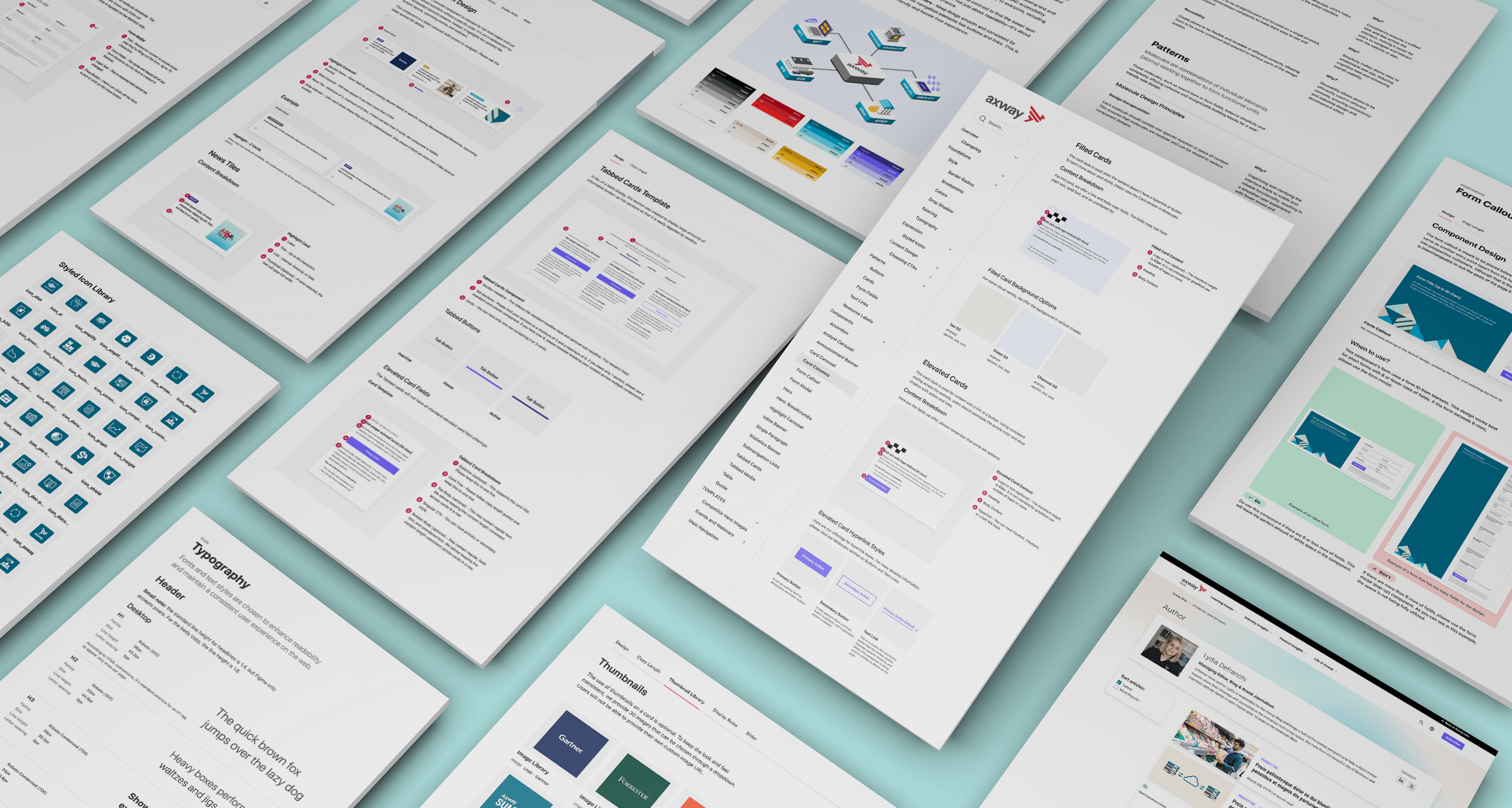Introduction
Nothing makes a web designer’s eyes light up faster than the idea of building a brand-new website from scratch. The chance to wipe the slate clean, rethink the architecture, and reimagine the design from top to bottom is the dream.
But the reality? Time, resources, and shifting priorities often mean companies need to take a more practical, iterative path. Instead of starting fresh, you pivot to improving what already exists, one component, one system, one scalable change at a time.
At Axway, this was exactly the case. The opportunity wasn’t to start over. It was to redesign, rebuild, and evolve an existing site into a system that could grow with the brand and scale globally. As part of this work, I authored Axway’s design system guidelines from the ground up, creating a single source of truth for scalable design.
Context & Challenges
Axway is a global B2B company with a complex website ecosystem supporting multiple products and regional audiences. As the sole marketing designer, I was responsible for implementing the evolving brand across the website and contributing to broader branding projects while building a scalable design system. Key challenges included:
- Slow turnaround of new pages, launches could take weeks or even months due to dependencies across copy, design, and development
- Inconsistent builds due to fragmented UI patterns and undocumented design decisions
- Lack of a system to support brand evolution at scale
- Mobile usability gaps, including a broken navigation menu and the absence of mobile designs from prior work
- Lack of reusable, responsive components, resulting in bloated templates and duplicated code
- Mounting design debt from ad hoc requests and one-off visual treatments
